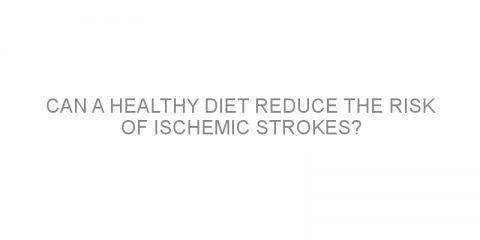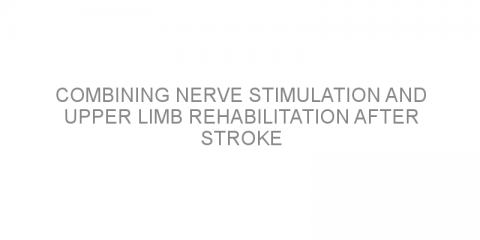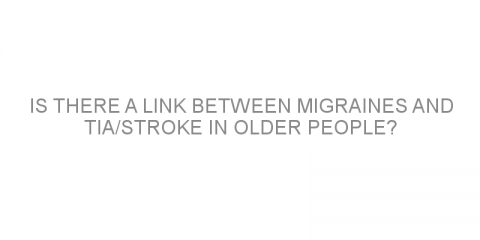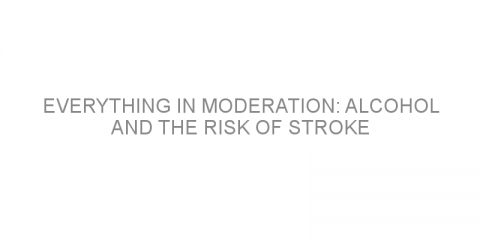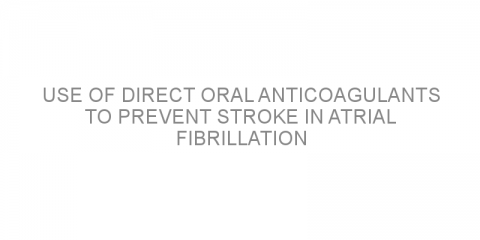In a nutshell This study tested whether pioglitazone (Actos), a drug that increases the body’s response to insulin, is effective at reducing the chance of vascular disease patients following stroke. Researchers determined that while treating stroke patients with pioglitazone decreased there risk of vascular disease and diabetes, there were...
Read MoreStroke Posts on Medivizor
Attention: Go With Your Heart | Medivizor
“The best and most beautiful things in the world cannot be seen or even touched – they must be felt with the heart.” ~Helen Keller Heart and Soul Perhaps the idea that the soul resides in the heart comes from its constancy. Our hearts start to beat in the womb at around 6 weeks. Usually parents-to-be can hear it at their 3 month prenatal...
Read MoreCan a healthy diet reduce the risk of ischemic strokes?
In a nutshell This study investigated a possible link between dietary habits and strokes. The researchers found that stroke patients were less likely to maintain a healthy diet compared to healthy controls. Some background Healthy diet and physical activity have been shown to be beneficial for overall health, but have not been studied in detail...
Read MoreMaintaining blood pressure level to decrease risk of recurrent stroke
In a nutshell This study aimed to determine what blood pressure level was associated with the lowest risk of stroke, vascular event and all cause mortality. The results showed a level of 120-128mmHg systolic and 65-70mmHg diastolic blood pressure as the lowest risk level for recurrent stroke and major vascular events. Some background...
Read MoreCombining nerve stimulation and upper limb rehabilitation after stroke
In a nutshell This study examined the safety and potential effectiveness of using vagus nerve stimulation (VNS) in combination with rehabilitation to improve upper limb function following stroke. It concluded that VNS is safe and has the potential to improve upper limb function when combined with rehabilitation movements. Some background...
Read MoreVisual cues are safe and feasible to include in post stroke walking rehabilitation
In a nutshell This trial assessed whether it was safe to include visual cue training (VCT) in rehabilitation therapy for patients following stroke. The study concluded that VCT was feasible to use in post stroke rehabilitation and may potentially improve walking speed, balance and walking symmetry. Some background Following stroke, patients often...
Read MoreIs there a link between migraines and TIA/stroke in older people?
In a nutshell This study aimed to determine whether there was an association between migraines and cryptogenic transient ischemic attack (TIA) or ischemic stroke. The researchers determined that there is a causal link between migraine and cryogenic TIA or ischemic stroke, particularly in older people. Some background Ischemic stroke occurs when a...
Read MoreThe effect of cerebrolysin and recovery after stroke
In a nutshell This paper studied whether stroke patients who receive cerebrolysin have improved motor function in their arms after 90 days. Some background A stroke occurs when there is not enough blood supply to the brain. Treatment is usually insufficient and is only successful during the first few hours. After a stroke, there could be...
Read MoreEverything in moderation: alcohol and the risk of stroke
In a nutshell This study examined the long-term association between alcohol consumption and the risk of stroke. The authors concluded that heavy alcohol consumption increases the risk of stroke. Some background Because stroke is a major cause of both disability and mortality, it is important to understand what risk factors are involved. Some risk...
Read MoreUse of direct oral anticoagulants to prevent stroke in atrial fibrillation
In a nutshell This paper studied the use of direct oral anticoagulants to prevent stroke in patients with atrial fibrillation. Some background Atrial fibrillation (AF) refers to an abnormal heart rate that is irregular and usually rapid. It increases the risk of stroke (not enough blood supplying the brain). Current recommended treatments...
Read MoreLooking for participants with tetraplegia to test system for recording brain activity
In a nutshell This study located in Pittsburgh, Pennsylvania, United States aims to determine the safety and efficacy of using two NeuroPort Arrays (electrodes) in recording brain activity which can be used to control external devices. The outcome that will be studied is the safety of the participants and the efficacy of the electrodes. The...
Read MoreManagement of spontaneous intracerebral hemorrhage
In a nutshell This paper reviewed the management of spontaneous intracerebral hemorrhage. Some background Spontaneous intracerebral hemorrhage refers to a blood clot that arises within the brain. It is spontaneous, meaning that there has been no trauma or surgery. This is associated with a greater risk of death compared to other causes of...
Read More

